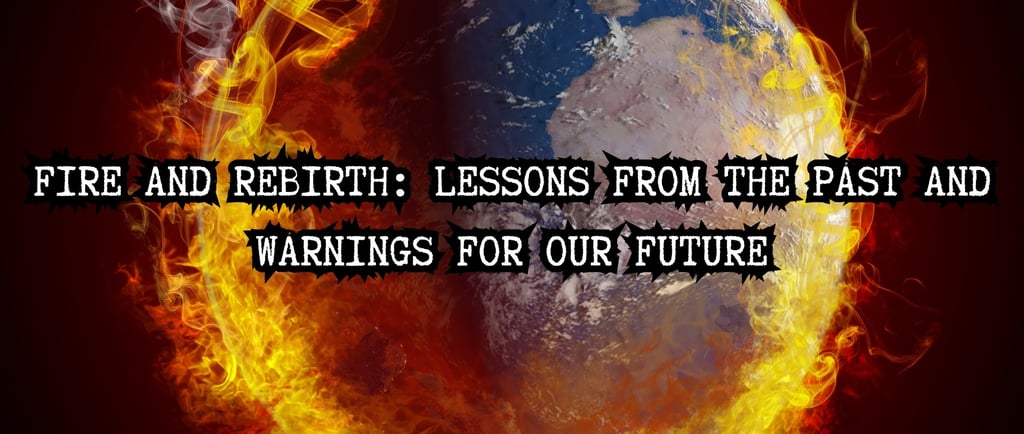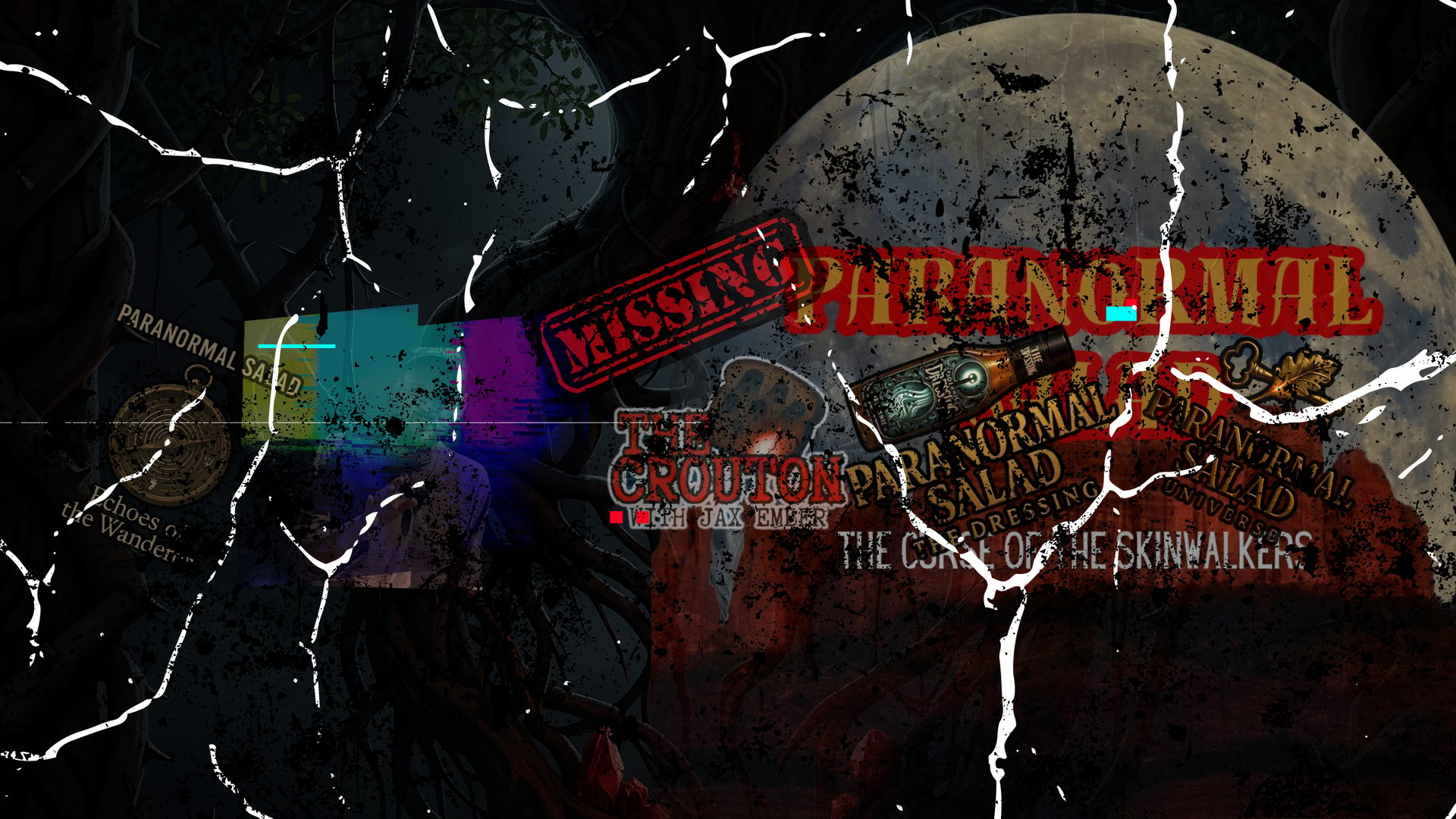From Ancient Myths to Modern Wildfires: Is Humanity Doomed to Face the Storm of Fire?
Dive into the fiery history of human civilization with J.A.X. Ember on Paranormal Salad: The Blog. From the controlled burns of ancient agricultural practices to the devastating eruption of Mount Vesuvius, discover how fire has been a symbol of destruction, rebirth, and divine prophecy. Explore the myths, cultural beliefs, and eerie parallels between ancient fires and today’s raging wildfires. Could the ancients have been trying to warn us about the storm of fire we face now? Read on and uncover the secrets of fire's dual nature and humanity’s eternal dance with the flames.
J.A.X Ember
1/9/20254 min read


Fire and Rebirth: Lessons from the Past and Warnings for Our Future
Throughout human history, fire has been both destroyer and creator, shaping civilizations, myths, and even the natural world itself. Ancient peoples revered fire as a force of renewal and transformation, a paradoxical element that could devastate lives while preparing the way for something new.
Today, as massive wildfires ravage our landscapes and climate crises intensify, the lessons from ancient civilizations about resilience and rebirth feel particularly urgent. But could there be more to the story? For centuries, fire has also been a central theme in apocalyptic prophecies and religious texts, warning of an ultimate reckoning—a storm of fire that might herald the end of the world.
Harnessing the Flame: Ancient Civilizations and Fire
For ancient societies, fire was a double-edged sword. It provided warmth, cooked food, and enabled technological advances like pottery and metalwork. But it was also a relentless force of nature, capable of annihilating entire cities and ecosystems in moments.
Agricultural Fire Practices: Ancient civilizations such as the Mayans and Egyptians harnessed fire as part of their agricultural cycles. By burning fields, they enriched the soil with ash, creating fertile land for crops—a literal rebirth from destruction.
Volcanic Eruptions and Urban Destruction: The eruption of Mount Vesuvius in 79 AD annihilated Pompeii and Herculaneum, burying them in volcanic ash. Yet this tragedy preserved a snapshot of Roman life and culture, enabling us to learn from their resilience and recovery efforts.
Fire as Purification: The Greeks and Romans performed fire rituals to cleanse spaces, appease the gods, and signal a fresh start. Similarly, in ancient China, fire was seen as an active force within the yin-yang cycle, necessary for balance and renewal.
In every culture, fire was more than a physical phenomenon—it was a symbol of transformation, woven into their spiritual and philosophical frameworks.
Modern Wildfires: Echoes of the Past
Fast forward to today, and fire remains as central to our survival and our challenges as it was thousands of years ago. The wildfires raging across California, Australia, the Amazon, and the Mediterranean are stark reminders of its destructive power.
The parallels to the ancient world are chilling:
Environmental Devastation: Like ancient Greece, where fire led to deforestation and erosion, today’s wildfires strip landscapes bare, disrupting ecosystems and pushing species toward extinction.
Cultural Loss: Entire communities, along with their histories and artifacts, are being lost. Just as Pompeii froze in time under ash, modern towns are being reduced to smoldering ruins.
Global Response: Ancient empires like Rome responded to disasters with rebuilding efforts, often blending traditional and innovative methods. Today, our response requires global cooperation and cutting-edge technology to combat the unprecedented scale of climate-driven wildfires.
However, modern wildfires are fueled by more than natural cycles. Climate change, poor land management, and urban expansion are amplifying their frequency and severity.
The Prophetic Storm of Fire
Beyond the physical and historical aspects of fire, humanity has long harbored a fascination—and fear—of apocalyptic flames. Religious texts, from the Bible to Hindu scriptures, often predict an ultimate reckoning involving fire.
The Book of Revelation: The Christian Bible’s final chapter describes a storm of fire as part of the apocalypse: “The first angel sounded his trumpet, and there came hail and fire mixed with blood, and it was hurled down on the earth” (Revelation 8:7). This fiery storm symbolizes divine judgment and purification, themes that echo ancient beliefs about fire’s transformative power.
Hindu Mythology: In Hindu cosmology, the god Shiva embodies destruction through fire, representing the end of one cycle and the birth of another in an eternal loop of creation and dissolution.
Modern Interpretations: Apocalyptic fire storms have been reinterpreted through the lens of climate science. Could these ancient prophecies have been intuitive warnings about humanity’s unsustainable relationship with the natural world?
As wildfires increase in frequency and intensity, the imagery of a world engulfed in flames feels less like myth and more like a warning from the past—and perhaps the future.
Rebirth from the Flames: What We Can Learn
Both ancient civilizations and modern societies have faced the challenge of rising from the ashes of destruction. The lessons of the past offer a roadmap for resilience in the face of today’s challenges.
Adaptation and Innovation: The Romans rebuilt Pompeii with stronger structures and improved urban planning. Today, we must adopt sustainable practices, invest in fire-resistant infrastructure, and develop new technologies to mitigate wildfire risks.
Environmental Stewardship: Ancient Greeks reforested their landscapes to restore balance. We must protect and regenerate forests, recognizing their role as carbon sinks and biodiversity havens.
Community Resilience: Just as survivors of ancient disasters banded together to rebuild, modern communities must foster cooperation and mutual support to face the challenges of climate-driven fires.
Looking Ahead: The Eternal Flame
Fire is a reminder of both our vulnerability and our strength. It has the power to destroy, but also to inspire growth and renewal. As we confront the rising tide of wildfires, we stand at a crossroads: will we learn from the lessons of the past, or will we continue to fuel the fires of destruction?
Ancient civilizations revered fire as a force of transformation, and their myths and histories remind us that rebirth is always possible. But rebirth requires action, foresight, and a willingness to adapt. The storm of fire is here—how we respond will determine the course of our future.
Explore these stories and more at Paranormal Salad The Blog, where we delve into the intersection of history, myth, and the paranormal to uncover the truths that shape our world.

Robert Jerome Pagan @ Copyright 2025
Paranormal Salad (TM)